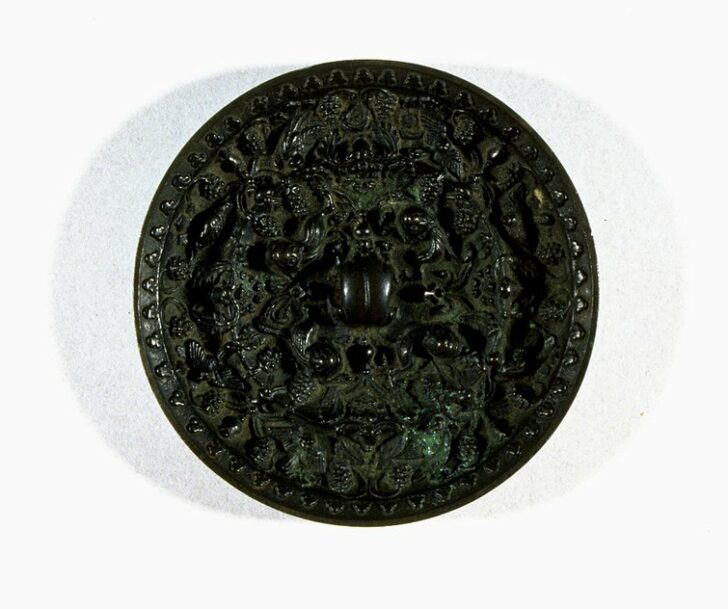Mirror, Lion-and-Grape type
Chinese

Description
Subject Matter:
The basic pattern consisted of five or more of the lions against a background and grape leaves. These animals were placed in a central field surro outer ring of birds, or other animals, also filled in with grapes; and this, in turn within a narrow border generally ornamented with cloud scrolls. Typically mirrors were sometimes made square, and occasionally the patterns appeared lobed variety popular after the middle T'ang. Very rarely, they were beaten silver or gold plates which were later inset into a bronze base.
Owing to certain historical events...the lion and grape patterns were apparently abandoned very suddenly - before the end of the T'ang- and they left practically no trace in other fields of T'ang art.
There is no doubt that the ultimate origin of the grape vine motive lies far back in the Near Eastern or Classical worlds...However, the reasons for its use apparently sprang from influences nearer at hand...T'ang grape patterns probably originated partly in ideas and motives borrowed by the Chinese from Central Asia, and partly in indigenous Chinese concepts; and also, that - like most other Chinese mirror patterns - these were far more than mere decorations, and must have had deep symbolic meaning.
Schuyler Cammann. “The Lion and Grape Patterns on Chinese Bronze Mirrors.” Artibus Asiae, vol. 16, no. 4, Artibus Asiae, 1953, pp. 265–91, doi:10.2307/3248647.
Physical Description:
Five or more of the lions against a background and grape leaves.
Usage Rights:
If you are interested in using an image for a publication, please visit https://umma.umich.edu/request-image/ for more information and to fill out the online Image Rights and Reproductions Request Form.